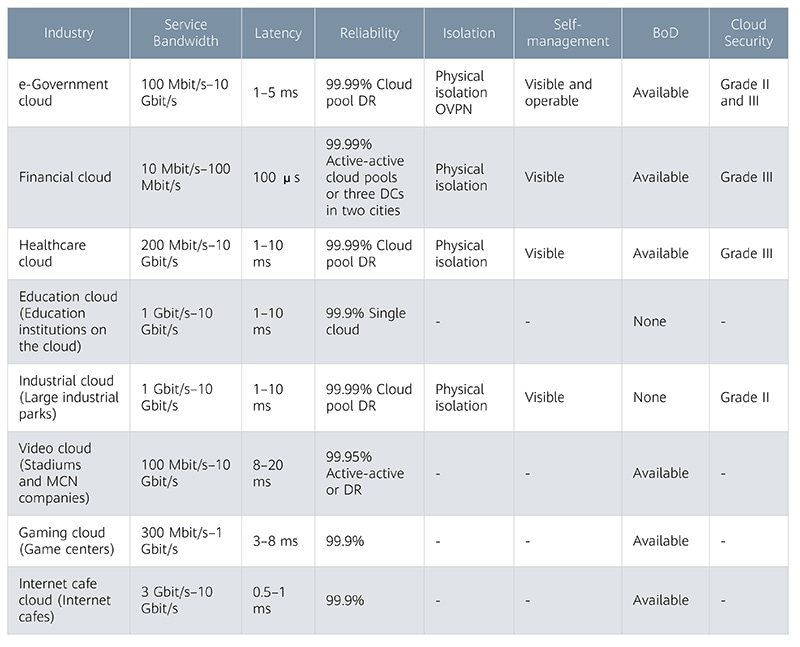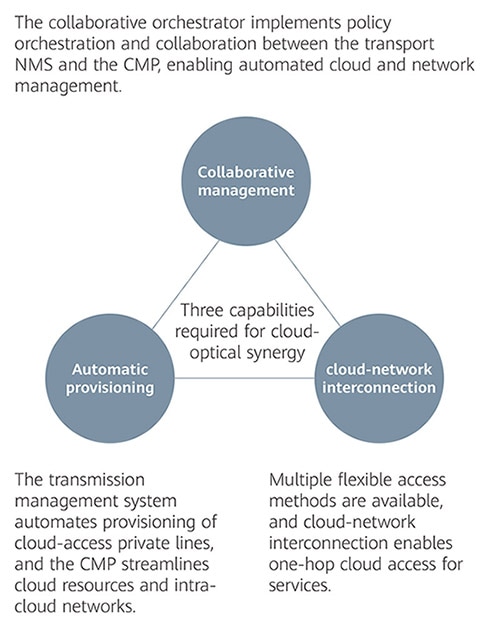Industry Trends
Enabling Industries with Gigabit Optical Networks
CAICT deep dives into gigabit optical tech and cloud-optical synergy.


By Zhang Haiyi, Deputy Director, Technology and Standards Research Institute, CAICT

Gigabit optical networks and premium OTN private lines are gaining popularity
In 2021, "gigabit optical network" was included in the Chinese government's work report for the first time, reflecting its importance.
To accelerate the construction of gigabit optical networks, the Ministry of Industry and Information Technology (MIIT) issued the Action Plan for Collaborative Development of Dual-Gigabit Networks (2021–2023) on March 24. This plan will serve as the highest-level design and guidance document for China's network development over the next three years. The Action Plan also proposes key tasks for accelerating the development of China's gigabit optical networks. Building gigabit cities, enhancing bearer capabilities, and enabling industry convergence are beneficial to the development of China's optical communications industry.
Gigabit optical networks will be integral to the foundation of China's digital economy. When combined with cloud and AI, these optical networks will be capable of connecting everything and stimulating the digital economy. The strong transport capacity of gigabit optical networks and the huge computing power of the cloud will boost the development of numerous industries, with a robust and prosperous digital economy requiring the integration of both technologies. Ultra-high-speed and highly-reliable network coverage are crucial for creating smart cities, providing a solid foundation for innovation across various industries, and maximizing the value of urban resources.
With the accelerated growth of gigabit optical networks, premium OTN private lines are a key focus of large enterprises for digital transformation. The Next Generation Optical Network Forum (NGOF) started researching the indicator system for high-quality private line application specifications in 2018, and has proposed indicators in a number of dimensions, including physical isolation, high availability, guaranteed low latency, and all-online. Several years of development have led to the wide implementation of high-quality private lines, from industrial innovation to business innovation.
To date, China's three major carriers have built over 70 government and enterprise private networks, supporting the digital transformation of large enterprises. For example, China Telecom Yunnan released its premium OTN private line service in Kunming, and China Mobile Tianjin announced the world's first commercial NG premium OTN private line. China Mobile Tianjin's DoubleS OTN premium government and enterprise private network will provide healthcare private line services for Tianjin Medical University General Hospital. This is an excellent example of how premium OTN private lines can facilitate the digitalization of the healthcare industry.
The commercial success of premium OTN private lines is promoting the transformation of optical transport networks, from basic bearer networks to premium service networks, and playing a vital role in the digital transformation of large enterprises.
High-quality cloud-optical synergy is accelerating industries' cloud migration
Following the rapid evolution of cloud, enterprises have become the mainstay of cloudification, and it’s estimated that over 85% of enterprise applications will be deployed on the cloud by 2025. In addition, the COVID-19 pandemic has driven industries to further accelerate the rate of cloudification. The government, finance, healthcare, education, and manufacturing sectors are all migrating to cloud, becoming digitalized and intelligent.
During cloud migration, different industries have distinct requirements. For example, the government, healthcare, education, manufacturing, and video industries all have a strong demand for high bandwidth, but the financial sector and cloud Internet cafes demand low latency. Meanwhile, the government, financial, healthcare, and manufacturing industries require high security and security isolation, while government services, finance, healthcare, and gaming all require on-demand bandwidth to reduce costs. Figure 1 shows typical requirements.

Figure 1 Cloudification KPIs of different industries (source: High-quality Private-Line for Cloud Era Technical White Paper)
What kind of solution can offer an optimal user experience for cloud migration services that address the diverse needs of different industries?
The answer is cloud-optical integrated premium OTN private lines.
OTNs have inherent advantages for network slicing. First, OTNs can transmit industry user services from the equipment room to cloud in one hop, supporting deterministic low latency, low jitter, and high availability during the cloud migration of industry users. Second, OTNs support software-defined networking (SDN) and, by extension, agile and customizable services for industry users. These features are enabling carriers to provide innovative and differentiated high-quality services for high-end industry customers in the era of cloud-network integration. Therefore, premium cloud-optical integrated private lines are the best solution when seeking to offer an optimal experience for cloud migration services that address stringent requirements.
At the end of 2020, NGOF released the High-quality Private-Line for Cloud Era Technical White Paper, which defines five criteria for measuring high-quality private line experience: security, reliability, convenience, responsiveness, and perception. Upgrading from premium private lines to premium cloud-optical synergy expands the application scenarios of optical networks in vertical industries and accelerates innovation in cloud-optical synergy technologies.

Figure 2 Three capabilities required for cloud-optical synergy
How can cloud-optical synergy better serve homes and enterprises through specific applications? When used by enterprises, premium OTN private lines ensure a five-star experience for VIP customers. OTN P2MP private lines ensure high-quality experience for SMEs. And PON private lines satisfy common private-line access requirements. In the case of homes, co-site deployment of OTNs and OLTs facilitates high-value broadband services, such as cloud VR and 360° live streaming, which can be accessed directly through OTN hard pipes to guarantee end-to-end quality.
To facilitate the development of integrated cloud-network services, improve user experience, and adapt to future trends, some carriers in China have deployed preliminary cloud-optical synergy services. For example, China Telecom Guangdong offers one-click cloud access through OTNs and direct access to e-Cloud through premium private lines. The carrier also uses optical service unit (OSU) technology to achieve smooth bandwidth adjustment for OTN cloud access. China Unicom Shandong has built smart optical cloud cities based on the industry cloud scenario. In addition, the carrier has examined the private-line requirements of various industries, such as government, finance, healthcare, and manufacturing, to offer comprehensive industry solutions that provide customers with more efficient, reliable, intelligent, and diverse high-quality private line services. Users immediately have access to the cloud upon service registration.
Expanding application scenarios of industry-specific premium private lines
The cloud migration of industries has accelerated the upgrade of premium private lines to premium cloud-optical synergy, and expanded the industry application scenarios for gigabit optical networks. In the future, carriers will need to explore how to integrate quality private lines within more industries. One example is government services, where a unified all-optical e-Government extranet can be used for multiple purposes and centralized management. Another example is in the financial industry, where ultra-low (microsecond-level) latency can support ultra-fast securities transactions and drive banks to become streamlined and digitalized. The healthcare industry is yet another example, where the highly reliable private line network is capable of supporting cloud-based medical imaging and medical resource sharing.
Premium private lines will extend to more buildings and campuses, and super OTN uplink will be applied to more homes. The entire industry value chain should come together and explore innovations related to MAN OTN applications. Industry players should push for OTN technologies to be deployed closer to end users through E2E networking and application innovations in gigabit optical networks, as this will optimize key transmission features like low latency in MANs. They should also drive innovation in OTN CPE applications intended for enterprises of various sizes to provide a superior experience for both industries and households.
In the future, how can the industry better develop gigabit optical networks and achieve the goals of the dual-gigabit plan?
The industry should collaborate to direct efforts towards technological research and innovative practices relating to gigabit optical network application and networking, and support the high-quality development of China's digital economy based on premium optical networks. The industry should also focus on accelerating the standardization, equipment R&D, and pilot application of OSU-based OTNs, and promote the wide application of premium OTNs in vertical industries.
We believe that the industry will answer the government's call to accelerate the construction of gigabit optical networks, promote cloud-optical synergy, and enable the development of Digital China through high-quality, all-optical connectivity.
- Tags:
- Optical Networks
- Carrier






